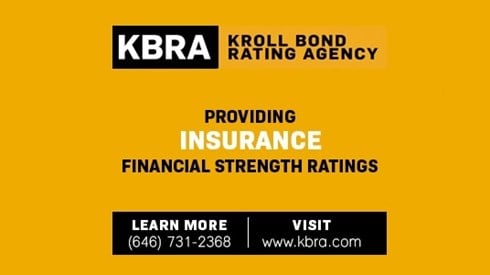KBRA's Global Captive Insurer Rating Methodology Is Freshly Released

November 02, 2017

Kroll Bond Rating Agency's (KBRA's) Global Captive Insurer Rating Methodology is now published. The methodology describes the major quantitative and qualitative factors KBRA considers when assessing the financial strength of captive insurers. The methodology defines a captive insurer as an entity (1) whose primary business is to accept the underwriting risk of its owner(s) and (2) that is licensed and regulated under its domiciliary jurisdiction's captive legislation.
Generally, KBRA's captive insurer analysis includes a comprehensive evaluation of key quantitative measures, including stress testing, as well as qualitative elements encompassing three rating determinants: balance sheet management, operating fundamentals, and captive profile and risk management. KBRA seeks to engage in a dialogue with management to enhance its understanding of the qualitative determinants.
Qualitative Rating Determinant 1
KBRA examines the captive insurer's approach to managing its balance sheet—the starting point of which is capital. Captive legislation specifies the minimum capital required and the allowable form(s) for that capital. Captive regulators may require amounts in excess of the minimum capital depending on the specific risks assumed by the captive. KBRA will use the regulatory requirements as a foundation in assessing a company's capital adequacy and give credit, as appropriate, to forms of capital not eligible for equity treatment under accounting standards.
Qualitative Rating Determinant 2
KBRA reviews the organization's operating fundamentals, including historical pre- and post-dividend earnings trends, various profitability ratios, and pro forma earnings for expected future scenarios (e.g., coverage or business expansion). KBRA's analysis is intended to be forward-looking and, therefore, is likely to take into account projections and estimates as appropriate.
Qualitative Rating Determinant 3
KBRA considers the captive's domicile and the effectiveness of its risk management framework, as well as the owner(s) overall involvement with, and strategic vision for, the captive.
Additionally, KBRA will formally gauge the ability and willingness of the owner(s) to financially support the captive when needed, especially in its early years of operation. For single-parent captives, KBRA will assess the credit quality of the parent company utilizing its General Corporate Rating Methodology.
With this rating methodology, a captive insurance company may underwrite, either on a primary or reinsurance basis, any line of business allowed under its domicile's captive legislation or approved by its domiciliary regulator. This methodology does not apply to any type of "cell" captive insurance companies, nor to risk retention groups licensed and regulated as traditional property/casualty insurance companies in their state of domicile. In the latter situation, KBRA's Global Insurer and Insurance Holding Company Rating Methodology would apply.
KBRA will assign ratings to captive insurance companies using its insurance financial strength rating (IFSR) scale. The IFSR reflects the likelihood that an insurer will meet its senior-most financial obligations, which typically are to its policyholders. For information on KBRA's rating scale, please see KBRA's Rating Scales and Definitions.
Complimentary registration is required to access KBRA's methodologies.
November 02, 2017
